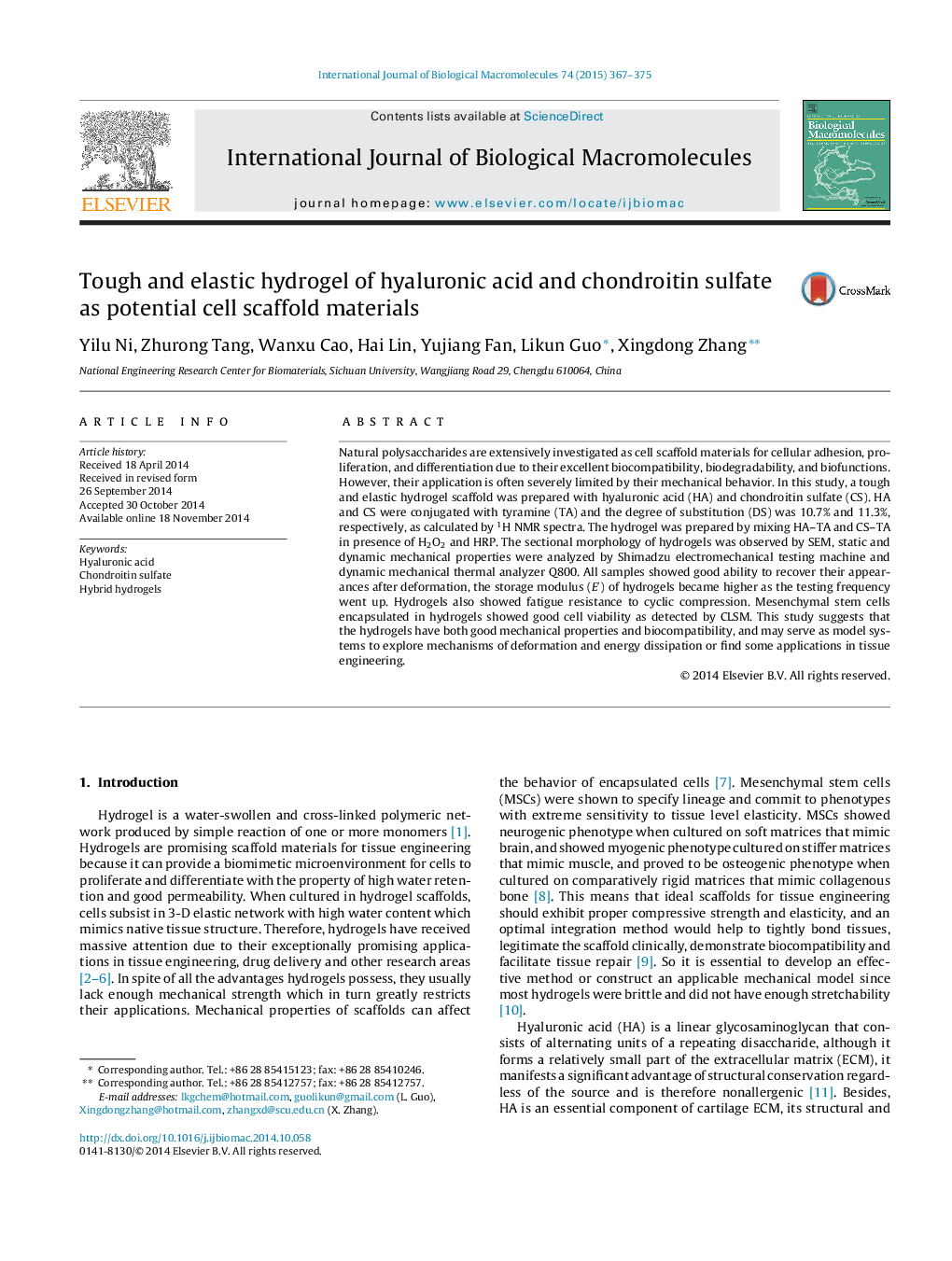| Article ID | Journal | Published Year | Pages | File Type |
|---|---|---|---|---|
| 8332037 | International Journal of Biological Macromolecules | 2015 | 9 Pages |
Abstract
Natural polysaccharides are extensively investigated as cell scaffold materials for cellular adhesion, proliferation, and differentiation due to their excellent biocompatibility, biodegradability, and biofunctions. However, their application is often severely limited by their mechanical behavior. In this study, a tough and elastic hydrogel scaffold was prepared with hyaluronic acid (HA) and chondroitin sulfate (CS). HA and CS were conjugated with tyramine (TA) and the degree of substitution (DS) was 10.7% and 11.3%, respectively, as calculated by 1H NMR spectra. The hydrogel was prepared by mixing HA-TA and CS-TA in presence of H2O2 and HRP. The sectional morphology of hydrogels was observed by SEM, static and dynamic mechanical properties were analyzed by Shimadzu electromechanical testing machine and dynamic mechanical thermal analyzer Q800. All samples showed good ability to recover their appearances after deformation, the storage modulus (Eâ²) of hydrogels became higher as the testing frequency went up. Hydrogels also showed fatigue resistance to cyclic compression. Mesenchymal stem cells encapsulated in hydrogels showed good cell viability as detected by CLSM. This study suggests that the hydrogels have both good mechanical properties and biocompatibility, and may serve as model systems to explore mechanisms of deformation and energy dissipation or find some applications in tissue engineering.
Related Topics
Life Sciences
Biochemistry, Genetics and Molecular Biology
Biochemistry
Authors
Yilu Ni, Zhurong Tang, Wanxu Cao, Hai Lin, Yujiang Fan, Likun Guo, Xingdong Zhang,
